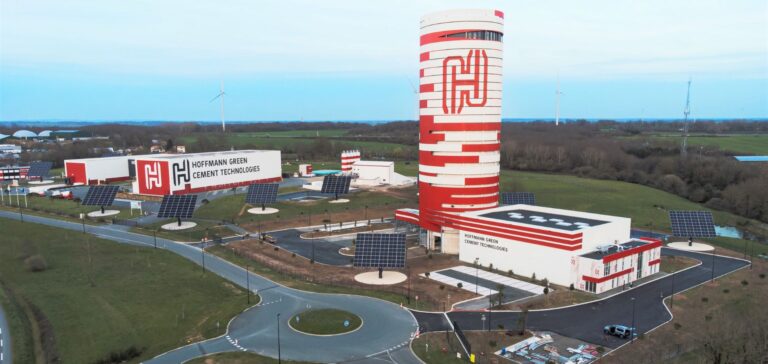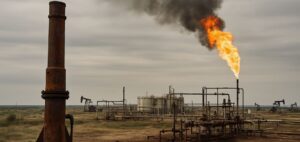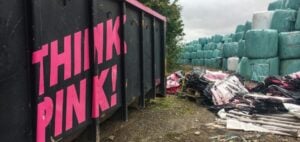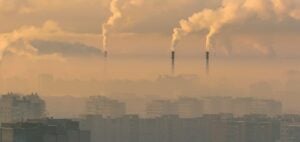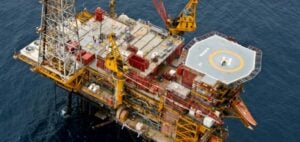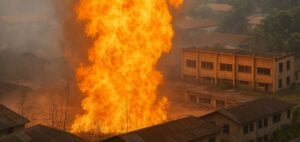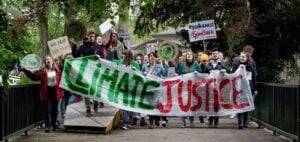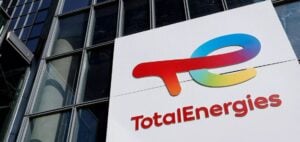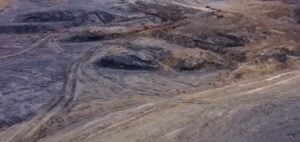Seventy kilometers south of Nantes, a tall circular red and white tower emerges from the greenery of the Vendée bocage: the cement plant of the French start-up Hoffmann Green has the ambition to become the beacon of a decarbonized cement industry, after two centuries of massive CO2 emissions. Inaugurated on Friday, the brand new factory illustrates the green reindustrialization strategy advocated by the executive. It promises to emit three to five times less greenhouse gases than traditional large cement companies and has been financially supported by the stimulus and France 2030 plans.
Emissions reduction
Each year, 250,000 tons of low-carbon cement should be produced. A straw compared to the needs of the country which consumes 18 million tons of cement per year. But a revolution in a sector that has hardly changed its highly polluting manufacturing methods since the invention of cement 200 years ago. The traditional process – firing limestone for 18 hours straight at more than 1,400°C to obtain the essential element of cement, clinker – requires huge volumes of natural gas and emits almost one ton of CO2 per ton of cement produced – 866 kilograms -, i.e. emission ratios higher than those of air transport.
Hoffmann Green’s Vendée cement “has no clinker”, emits “on average 200 kg of CO2” per ton, is made “without cooking”, “without gas”, “without water” and “at room temperature”, by “mixing industrial waste reduced to powder”, summarizes for AFP Julien Blanchard, chairman of the board and co-founder of the start-up born in 2015. The three main ingredients are “steel slag” -waste from steel manufacturing- “clay sludge” recovered from quarries, and “gypsum” contained in gypsum boards from deconstructed buildings. In-house patented admixtures then trigger a cold reaction to amalgamate the cement.
The recipe was developed by David Hoffmann, a mineral chemical engineer and former employee of Séché Environnement, who co-founded the start-up. In this unique vertical plant, the 70-meter high tower allows the mixing of ingredients from 19 silos several dozen meters high. And above all “to reduce by half the footprint” of the installation compared to the first small pilot plant installed just next door. Another key element in the decarbonization of the process is that energy now accounts for only 2% of the company’s overall costs “compared to 20% in the traditional sector,” according to Blanchard.
The “colossus” can “disappear”.
A series of photovoltaic panels on stilts, like large metal trees following the orientation of the sun all day, generate 50% of the site’s electricity consumption. “All these elements mean that our cement generates five times less CO2 emissions than traditional cement,” says Blanchard. Of course the price is also “twice as expensive as traditional cement,” he admits. “But the more we produce, the more prices will fall,” he says, betting on a “crossing of the price curves” between his cement and the traditional “in 2026-27”.
The cement industry “sees us as the bad guys who want to shut down traditional cement plants,” says Stéphane Pierronnet, the plant’s operations manager. Yet the last five years have been a long and expensive road. Above all, to obtain the certifications that will allow decarbonated cement to enter the ranks of the major standardised and referenced cements. “Between 5 and 10 million euros” were needed to finance the evaluations to obtain the guarantee that “our cements are as strong”, “with the same lifespan, the same resistance to fire, to marine salts…” as traditional cements, explains Blanchard.
The company, which employs 55 people, including 20% in research and development, is planning a second plant in Dunkirk. She also has projects in Switzerland, Belgium and the United Kingdom. “We have demonstrated that cement can be made without polluting clinker, and clinker is the raison d’être of the traditional industry, which has not yet fully grasped the scale of the revolution underway,” Blanchard adds. “A bit like Kodak, which did not believe in the end of film,” he adds, “even if they are colossuses, they can disappear very quickly if they do not adapt quickly to the new context.

